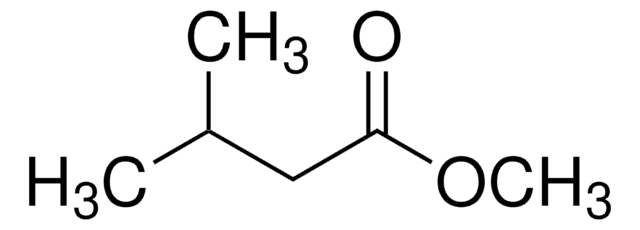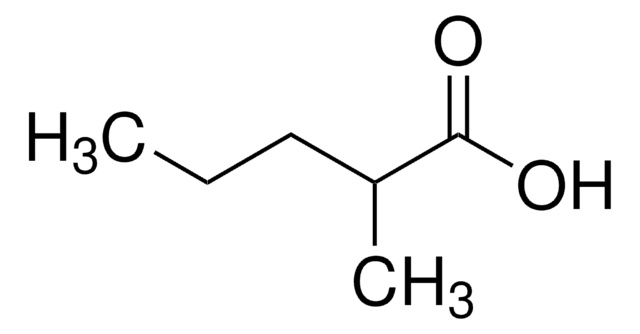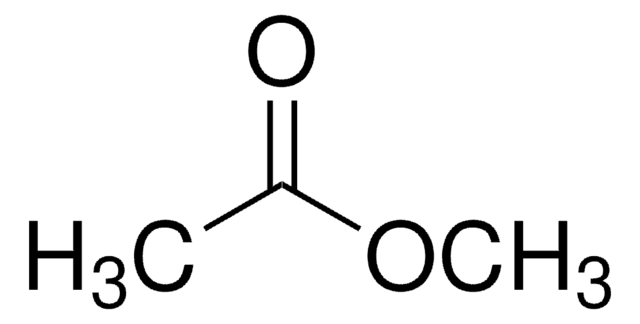W270806
Methyl hexanoate
≥99%, FG
Sinonimo/i:
Caproic acid methyl ester, Methyl caproate
About This Item
Prodotti consigliati
Origine biologica
synthetic
Livello qualitativo
Grado
FG
Fragrance grade
Halal
agenzia
(EU Regulation 1223/2009)
(follows IFRA guidelines)
meets purity specifications of JECFA
Conformità normativa
EU Regulation 1334/2008 & 178/2002
FDA 21 CFR 172.515
Saggio
≥99%
Indice di rifrazione
n20/D 1.405 (lit.)
P. eboll.
151 °C (lit.)
Punto di fusione
−71 °C (lit.)
Densità
0.885 g/mL at 25 °C (lit.)
applicazioni
flavors and fragrances
Documentazione
see Safety & Documentation for available documents
Allergene alimentare
no known allergens
Allergene in fragranze
no known allergens
Organolettico
fruity; ethereal; pineapple
Stringa SMILE
CCCCCC(=O)OC
InChI
1S/C7H14O2/c1-3-4-5-6-7(8)9-2/h3-6H2,1-2H3
NUKZAGXMHTUAFE-UHFFFAOYSA-N
Cerchi prodotti simili? Visita Guida al confronto tra prodotti
Applicazioni
- Effect of fat nature and aroma compound hydrophobicity on flavor release from complex food emulsions.: This study investigates how the nature of fat and the hydrophobicity of aroma compounds, including Methyl hexanoate, influence flavor release in complex food emulsions. The findings provide insights into the interactions between fat types and aroma compounds, which can help in the formulation of food products with optimized flavor profiles. (Relkin et al., 2004).
Avvertenze
Warning
Indicazioni di pericolo
Consigli di prudenza
Classi di pericolo
Flam. Liq. 3
Codice della classe di stoccaggio
3 - Flammable liquids
Classe di pericolosità dell'acqua (WGK)
WGK 3
Punto d’infiammabilità (°F)
99.5 °F - closed cup
Punto d’infiammabilità (°C)
37.5 °C - closed cup
Dispositivi di protezione individuale
Eyeshields, Faceshields, Gloves, type ABEK (EN14387) respirator filter
Scegli una delle versioni più recenti:
Possiedi già questo prodotto?
I documenti relativi ai prodotti acquistati recentemente sono disponibili nell’Archivio dei documenti.
I clienti hanno visto anche
Il team dei nostri ricercatori vanta grande esperienza in tutte le aree della ricerca quali Life Science, scienza dei materiali, sintesi chimica, cromatografia, discipline analitiche, ecc..
Contatta l'Assistenza Tecnica.












